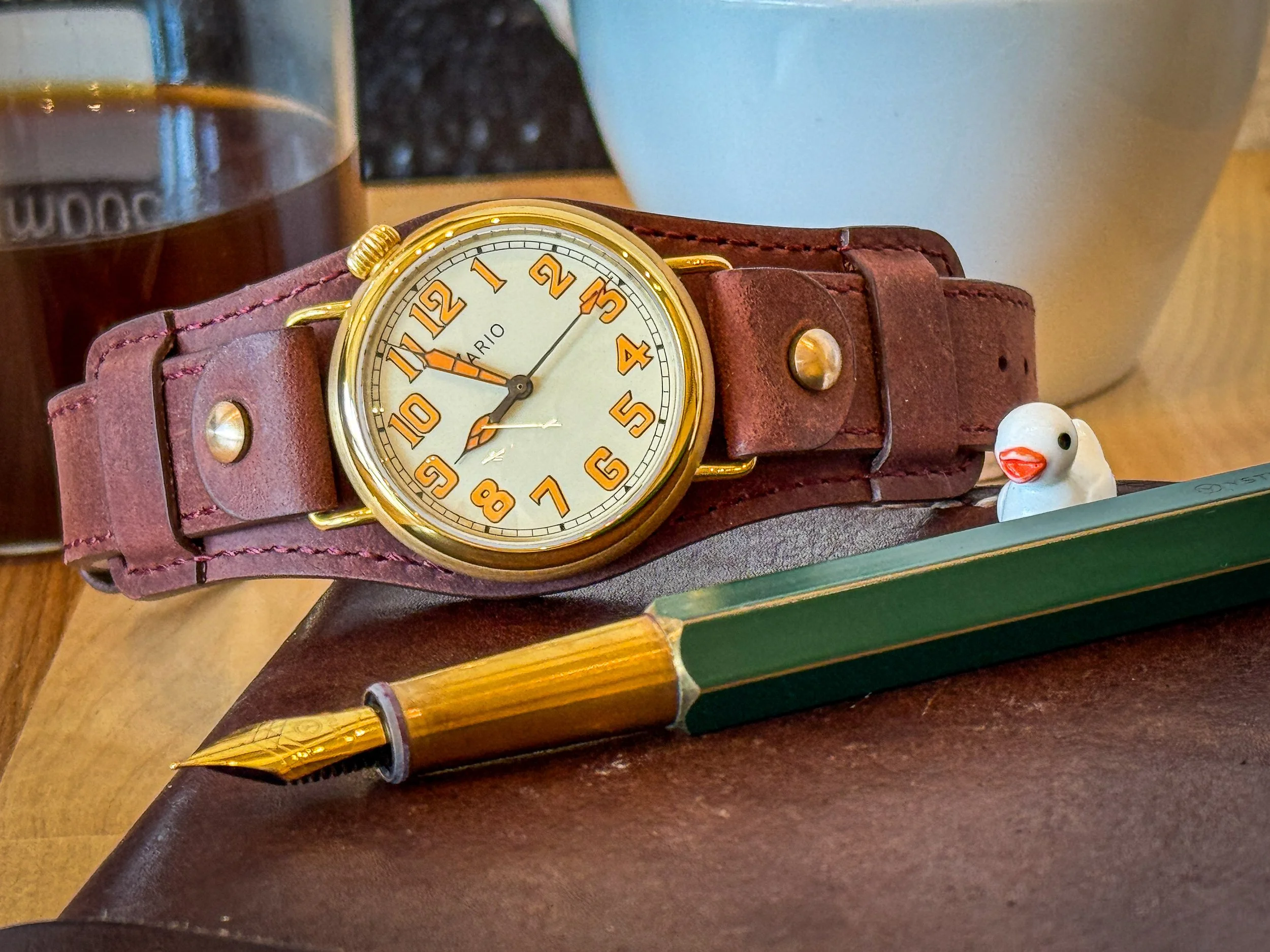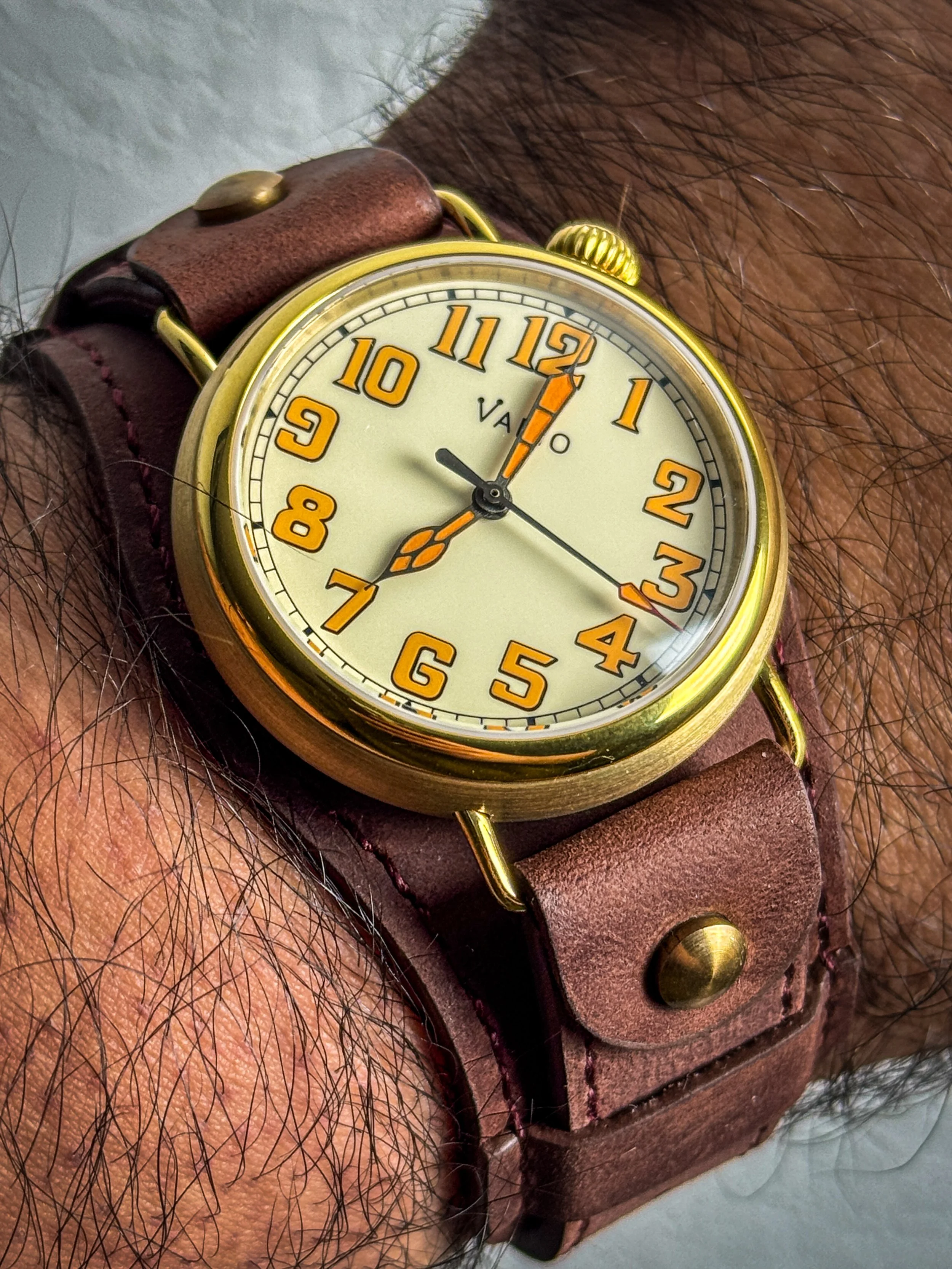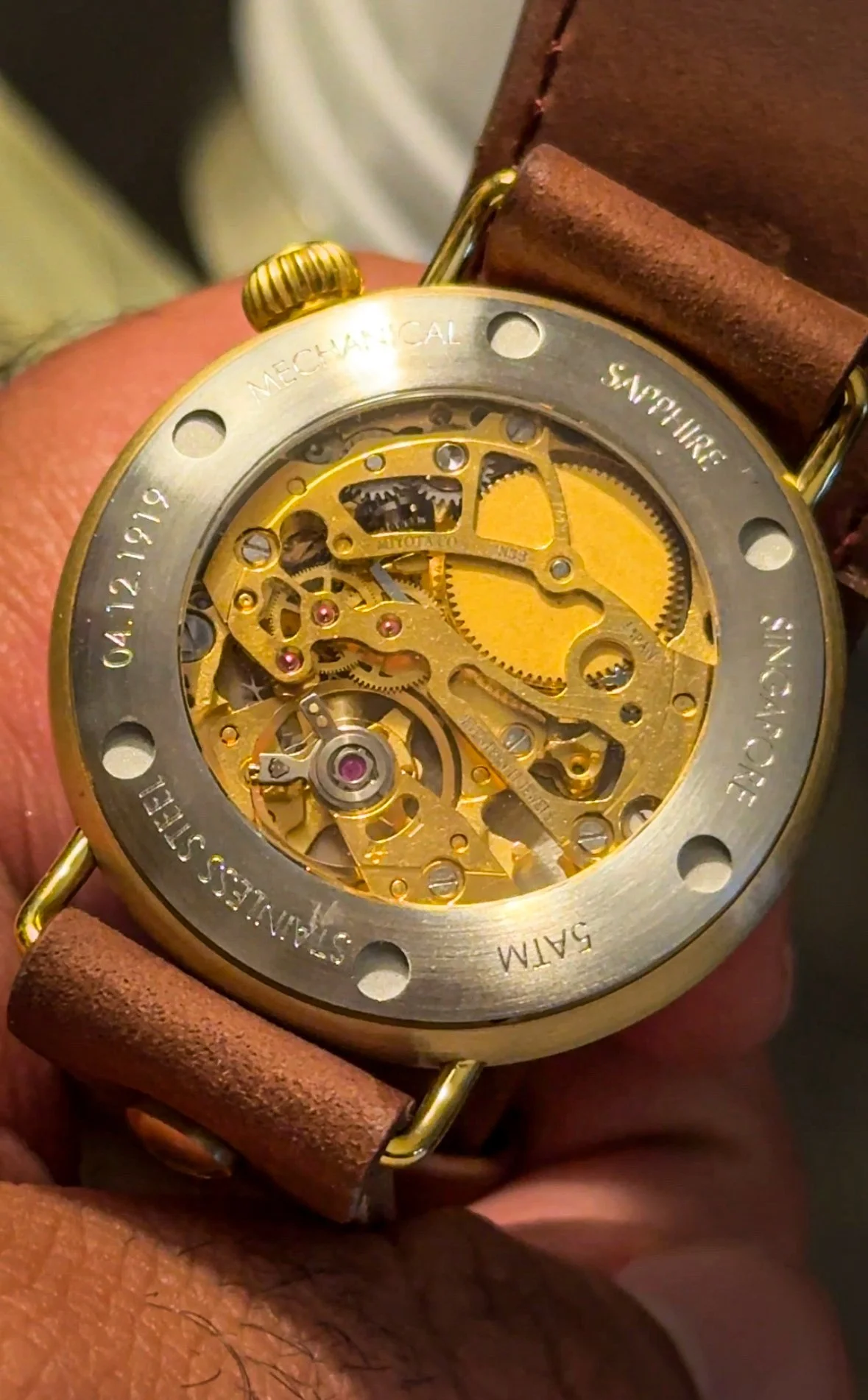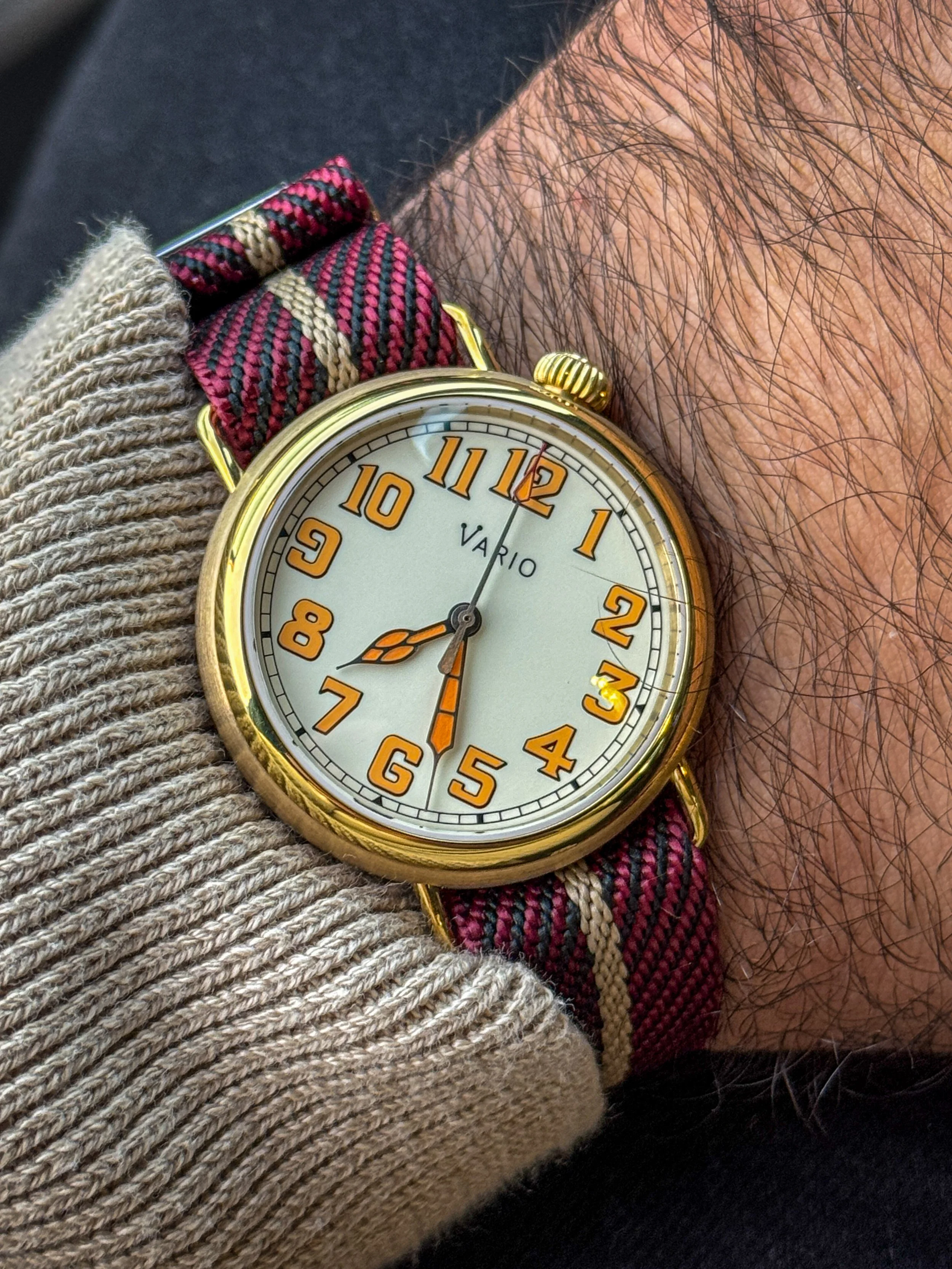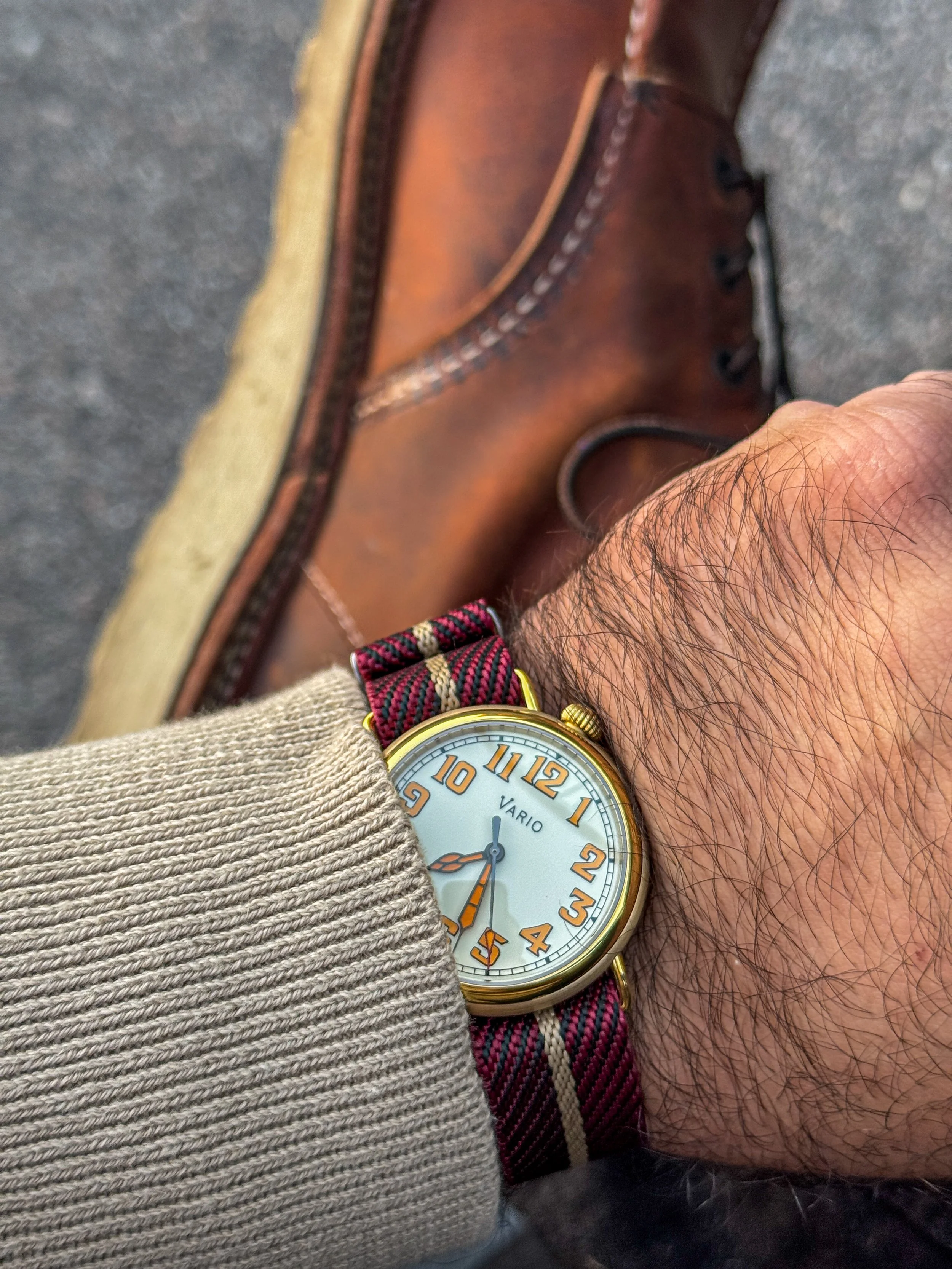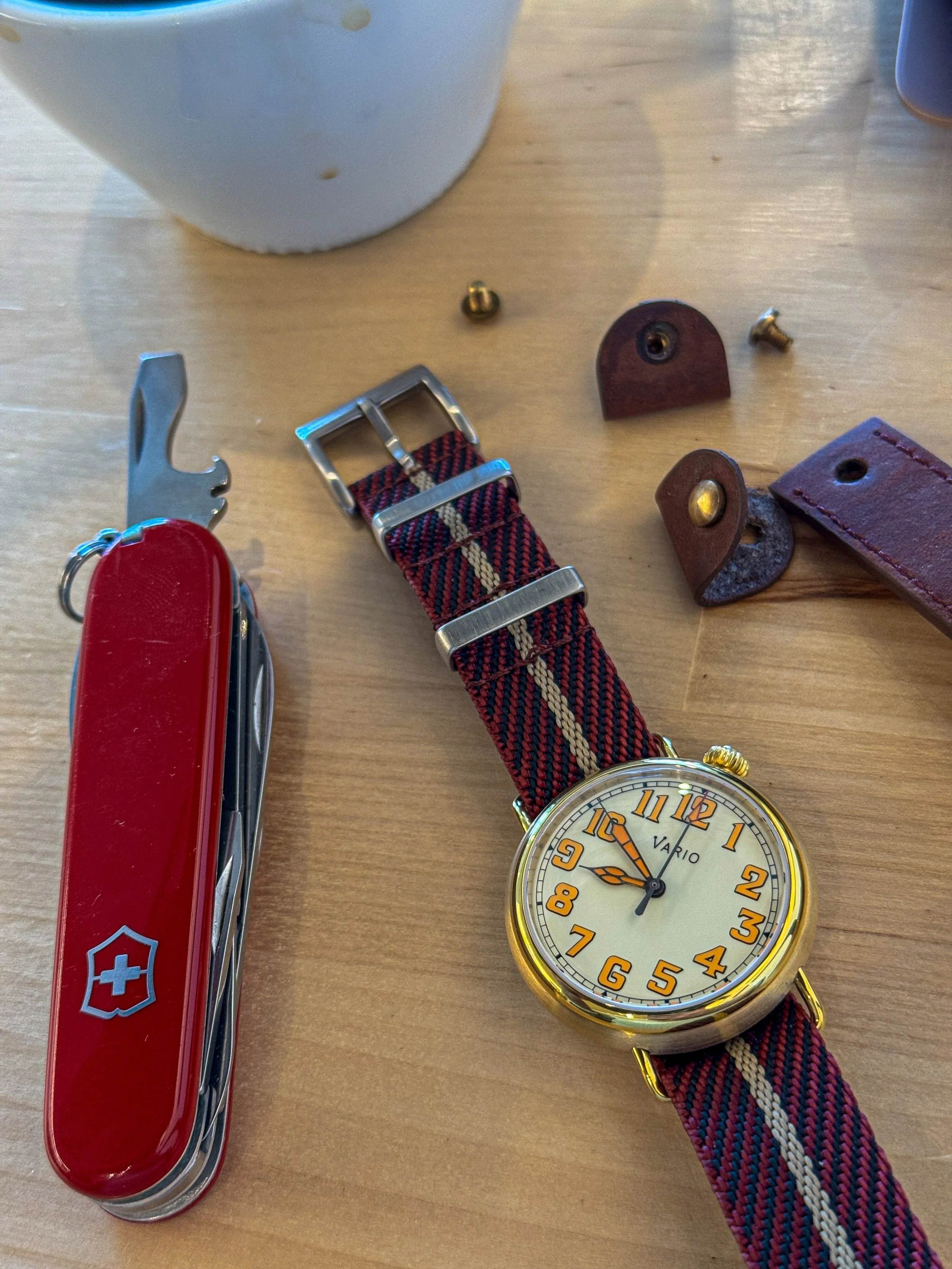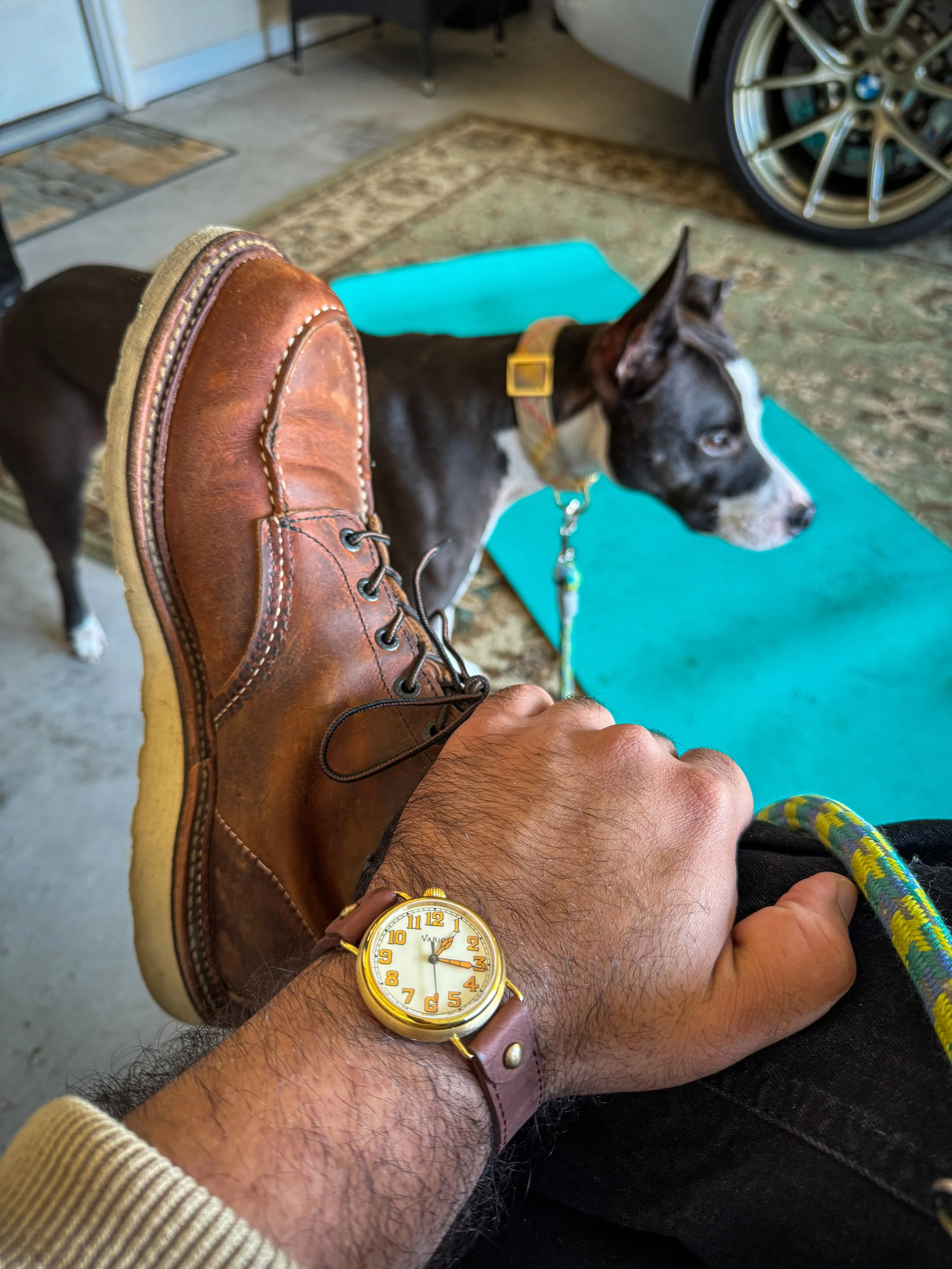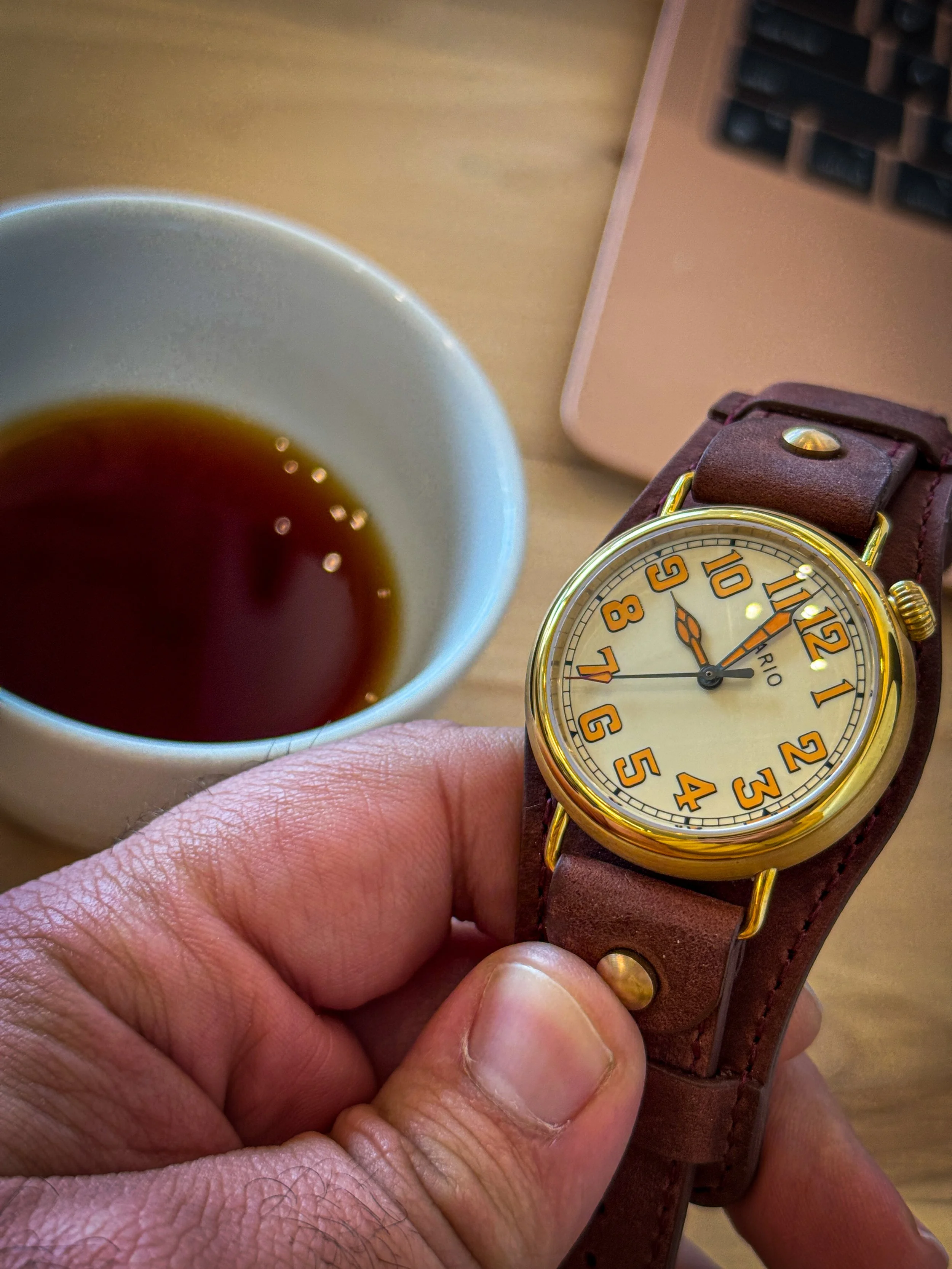The 37mm Vario 1918 Pilot: A Modern Nod to a Simpler Time
Photo by Chris Antzoulis
Maybe I’m a bit off-kilter, and that’s why I was instantly so drawn to this watch. Or perhaps it’s because I lust after a Vacheron Historiques 1921. While it certainly doesn’t satisfy my desire for a precious metal piece from a Holy Trinity watch brand, what it does achieve is special in its own right. The Vario 1918 Brass 37mm Pilot Watch captures an irresistible vintage rock and roll vibe that I dig beyond reason.
Photo by Chris Antzoulis
Backstory and Transparency: In March 2024, I attended the District Time Watch convention in Washington, D.C., with my friend Vincent Deschamps. You may know Vincent from his online watch blog, Mainspring Watch Magazine. Vincent took me to the Vario table to introduce me to the brand’s owner, Ivan Chua. Ivan has a captivating life story that led him to Vario, which I covered for Mainspring. However, I was enjoying the opportunity to try on different Vario models for the first time at the show. I loved both the 1918 Pilot and the 1918 Trench. I appreciated the design of the Pilot and the 37mm size of the Trench, which features a brass case. Little did I know that Ivan was already planning to release a smaller brass version of the 1918 Pilot. When Ivan released this new model in October 2024, he sent it to me as a gift, with no expectation that I would write about it. No one from Vario has seen this review before its publication.
Review:
Vario takes risks with its watches that few independent brands would consider. While most brands are slinging diver after diver and integrated sports pieces, Vario is crafting fixed-lug trench watches and reversible quartz models. This is something that draws me to the brand, as it makes them stand out in a crowded market while also providing consumers with different ways to express themselves. If you decide to expand your horizons and take the leap with Vario, you likely won’t regret it. However, you should ensure you’re comfortable with a few quirks that enthusiasts often disagree on.
Photo by Chris Antzoulis
First, it’s essential to grasp the general history of WWI and military watches from the early 1900s. To understand this, you should know that wristwatches were not commonly available for men during this time, even though the military had shown a demand for them at the start of the 20th century. Pocket watches were more accessible and socially acceptable for men. However, they were not practical companions for soldiers during the war. The act of soldering lugs to pocket watches became popular as it allowed soldiers to wear their timepieces on their wrists, making it easier and more economical to check the time. Pocket watches from this era were manually wound, often large, and featured dials with substantial, legible numerals. Vario aimed to embody the ethos of this style through its Trench and Pilot watch lines.
Now that some fundamental history has been taken care of let’s address those quirks I mentioned. The fixed lugs and the discontinued Miyota 8N33 movement are likely the two aspects that some may find contentious about this watch. Regarding the fixed lugs, Ivan deliberately chose to harken back to the source of inspiration for these watches. As I mentioned, during WWI, soldiers would solder lugs onto pocket watches since men’s wristwatches did not exist at that time. Therefore, the lugs were fixed. Ivan could have made them removable, but he wanted the wearer to experience just a touch more of the vintage vibe. It’s a bonus that this watch looks stunning on the supplied bund strap, and if you’re not a fan of bunds, you can easily remove the backing and wear the supplied strap without it. This watch also looks great on NATO-style fabric straps as well. You won’t be able to wear a traditional bracelet with this watch or buy standard two-piece straps. I see this not as a loss, but as a challenge to find stylish options that look snazzy wrapped up in those 18mm fixed lugs.
While I’ve found the fixed lugs fun, I have to admit that I have questions about the Miyota 8N33 movement. I have no problem with manual wind; in fact, I prefer manual wind mechanical movements over automatic ones. Yes, it’s the romance of connecting with my watch in the morning. Blah blah blah, I’m that fucking guy; deal with it. I also don’t have an issue with the non-hacking seconds, as I understand that this pays homage to the movements of that era. I’m not one of those people who needs the time to be exact down to the second. Instead, my questions lie with the serviceability of the movement. Will the movement be serviceable when there’s an issue down the line? Or will the movement be replaceable? I don’t know. However, I do know that the movement in mine works great and is rather beautiful to observe through the exhibition caseback. I understand that I didn’t buy this watch, but at the $388 price point, I still believe I would have purchased it, even considering the slight risk involved.
Photo by Chris Antzoulis
While these factors may cause you to pause, once you’ve embraced them, you’ll discover that the watch is also unique in many other respects. The most noticeable feature is the tilted dial and crown. It may take a moment to adjust, but by the end of the first day, you’ll read the time with ease. Whether or not it’s a myth that tilted dials were invented for drivers, they do provide slight ease of readability when your hands are at the 10 and 2. The dial is sparse with text, with only the Vario logo above the pinion. This allows for the use of cathedral hands, railroad track minute markings, and large Arabic numerals to embellish the dial with minimal distraction.
This is all housed in a 37mm case that spans a 45mm lug-to-lug distance, making the watch suitable for most wrist sizes and allowing it to wear comfortably on the supplied strap. The watch is 12mm thick if you include the double-domed sapphire crystal but will wear a smidge thicker if you keep it on the padded bund backing. The Vario 1918 Pilot wears more like a 39mm watch, which hits that “sweet spot” for many folks. So, keep that in mind if you’re torn between this watch's 37mm and 40mm versions.
When you flip the brass case over, the Miyota 8N33 becomes visible through the sapphire crystal caseback. It’s quite a sight to behold for the price. The movement is predominantly golden, with bridges spidering across most of the surface area. I’ve personally never seen another movement that looks like this in a modern watch. While it may not be the most accurate, at -20 to +40 seconds a day, and it doesn’t hack, I believe it’s still suitable for a watch with vintage appeal priced under $400.
What I like most about the Vario 1918 Pilot is that it stands out subtly as a nod to a simpler time concerning watches. I’ve owned this watch for only a few months, yet I’ve received comments from a handful of people while wearing it. Each person believes it is a true vintage watch until I tell them otherwise. I have a lot of fun adding a touch of vintage quirk to my style, as I primarily dress in a casual and colorful street style featuring sneakers, t-shirts, jeans, and caps. The Vario doesn’t just make a statement; it poses the question, “What’s that guy wearing?” And it’s a question I relish answering.
